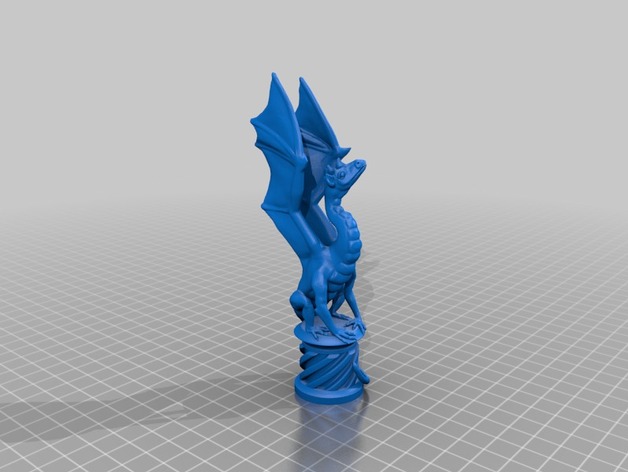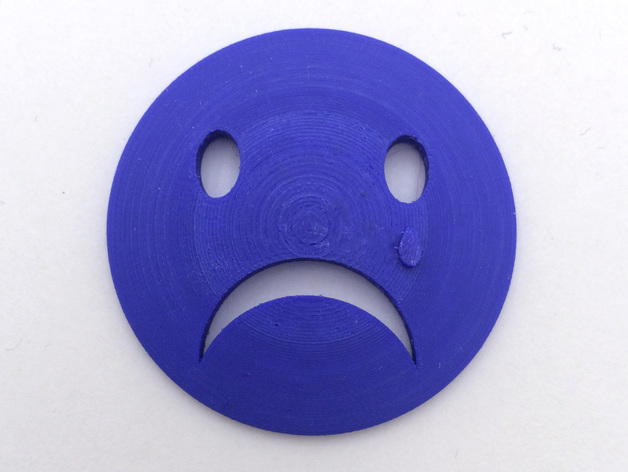What makes 3D marketplaces like Thingiverse and MyMiniFactory such a pleasant experience for designers is the open access it gives them to the 3D printing community. Their 3D models can be freely shared, customized, and 3D printed by all, which in turn helps to cultivate innovation throughout this vast network of Makers. But, unfortunately, it also seems to leave these hard-working designers open to exploitation from individuals looking to monetize their freely available CAD models. According to Michael Weinberg, of Public Knowledge, one Thingiverse user, who goes by the name loubie, has brought this issue to light after discovering that over 2,000 models (and their pictures) from Thingiverse were being sold in 3D printed form by an eBay account named just3Dprint. This included loubie’s Aria The Dragon model below.

After loubie had asked just3Dprint to take down her models from their eBay store, they responded by claiming that they had broken no copyright laws, and that they were not reselling CAD models but “transformative adaptations” of them. “When you uploaded your items onto Thingiverse for mass distribution, you lost all rights to them whatsoever,” they reportedly said in response to loubie. “They entered what is known in the legal world as ‘public domain’.” To bring attention to this issue, and help make other Thingiverse designers aware that their CAD models were being monetized on eBay, loubie uploaded her Sad Face design to Thingiverse, along with her evidence against just3Dprint and their response to her allegations.
Here’s the entire response from just3Dprint:
“When you uploaded your items onto Thingiverse for mass distribution, you lost all rights to them whatsoever. They entered what is known in the legal world as “public domain”. The single exception to public domain rules are “original works of art”. No court in the USA has yet ruled a CAD model an original work or art. Therefore, you have no right to exclude others from utilizing the CAD models you have uploaded.
Furthermore, if in the future we do get a precedent in the USA for establishing CAD models as “original works of art”, we would still likely be just fine as we are not re-selling your CAD models, but rather “transformative” adaptions of them in the form of 3D printed objects.”
SFE
P.S. When you created these CAD files, did you really want to limit the amount of people who could enjoy them to the 0.01% of the USA with a 3D Printer? 100% of America can purchase the items from us at a reasonable cost and enjoy them-creating made in the USA jobs in the process as well. Furthermore, if you hate the idea of people profiteering from your work, you may want to take it up with Makerbot/Stratasys who only hosts Thingiverse for AD revenue, to sell more 3D printers.”

As unethical as just3Dprint’s actions may seem, are they actually illegal? They certainly don’t think so, but the story is gaining traction and criticism is starting to build against just3Dprint. 3D printing legal expert Michael Weinberg doesn’t buy their defensive response to loubie, and has gone on to defend her and all Thingiverse users in general.

He claims that CAD files do indeed carry the weight of copyright and also states that Creative Commons (CC) licenses clearly apply to 3D models. Perhaps even more importantly, he points to the Thingiverse Terms of Use as proof that just3Dprint is likely in the wrong. “The Thingiverse Terms of Use are pretty clear (see section 3.2). By uploading a model to thingiverse you are granting rights to Thingiverse,” Feinberg said. “You are not granting any rights to third parties that are not thingiverse, nor are you dedicating your model to the public domain.”
As it stands now, there doesn’t seem to be enough evidence or legal clarity to say if just3Dprint is illegally infringing on these 3D models. Either way it doesn’t seem right to me, even more so because the eBay listings use the designer’s own pictures and don’t credit the Thingiverse user at all (which you can see for yourself by looking at loubie’s Thingiverse model and just3Dprint’s eBay listing of the same model side by side). For now, you can use the proposed evidence to decide if just3Dprint is actually infringing or not, but whether it turns out to be technically legal or not, it still leaves a bad taste in my mouth.
If this controversial story starts to gain some traction (and I have a feeling it will), we will be sure to keep you updated!
Hat tip to Nils Hitze, of bq, for sharing this story with us.
Editor’s Update 2/22/2016:

Leave A Comment